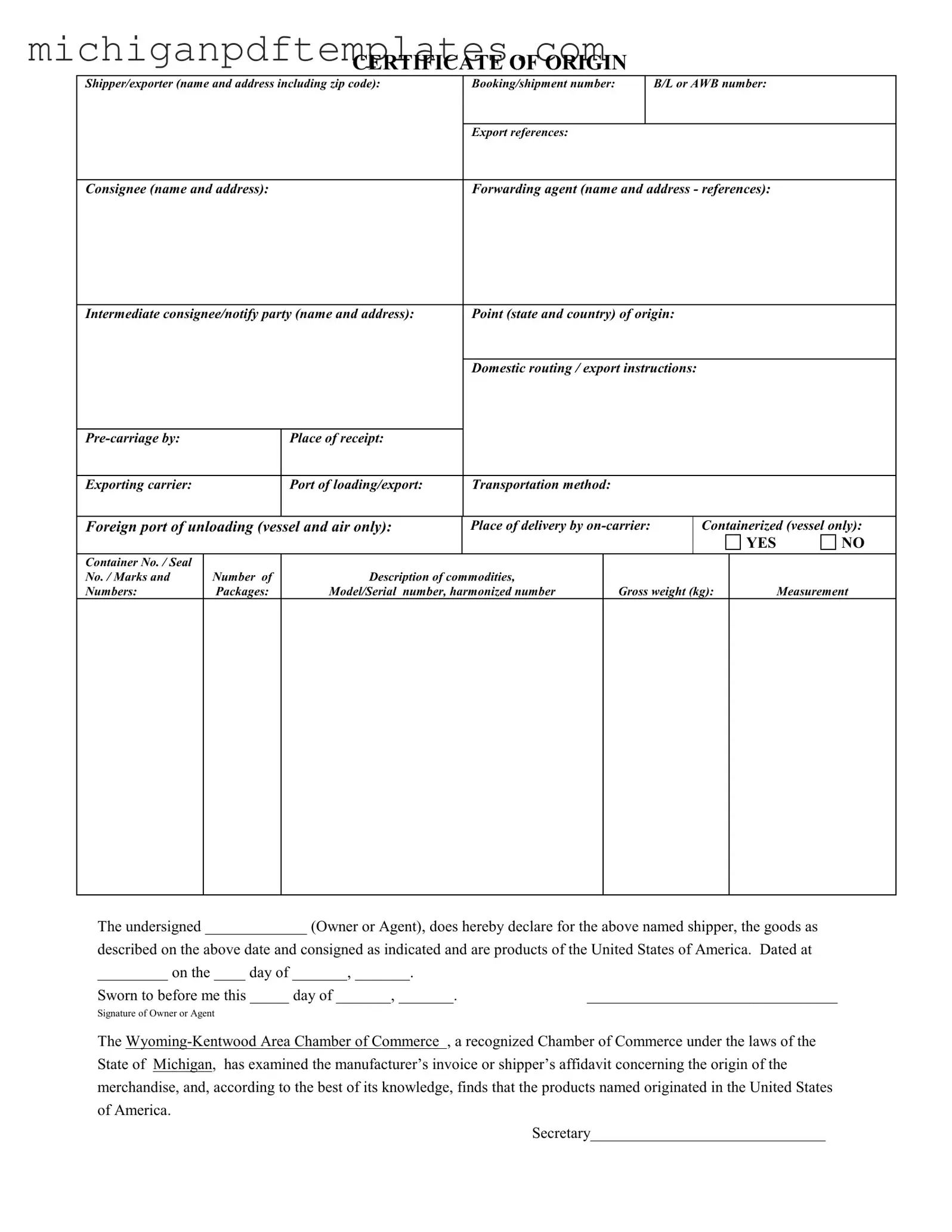The Michigan Certificate of Origin form serves as a vital document in the shipping and export process, particularly for goods being transported from the United States to international destinations. This form captures essential information about the shipment, including the names and addresses of the shipper and consignee, as well as details about the forwarding agent and any intermediate consignees. It specifies the point of origin, domestic routing, and export instructions, which are crucial for ensuring that goods are properly routed and handled throughout their journey. Additionally, the form includes sections for the description of the commodities, their gross weight, and other identifying details, such as model numbers and harmonized codes. Importantly, the certificate also requires a declaration from the owner or agent, affirming that the goods are products of the United States. This declaration is supported by the examination of the manufacturer’s invoice or shipper’s affidavit by a recognized Chamber of Commerce, which adds a layer of credibility to the document. Overall, the Michigan Certificate of Origin is not just a formality; it plays a critical role in facilitating international trade and ensuring compliance with export regulations.
